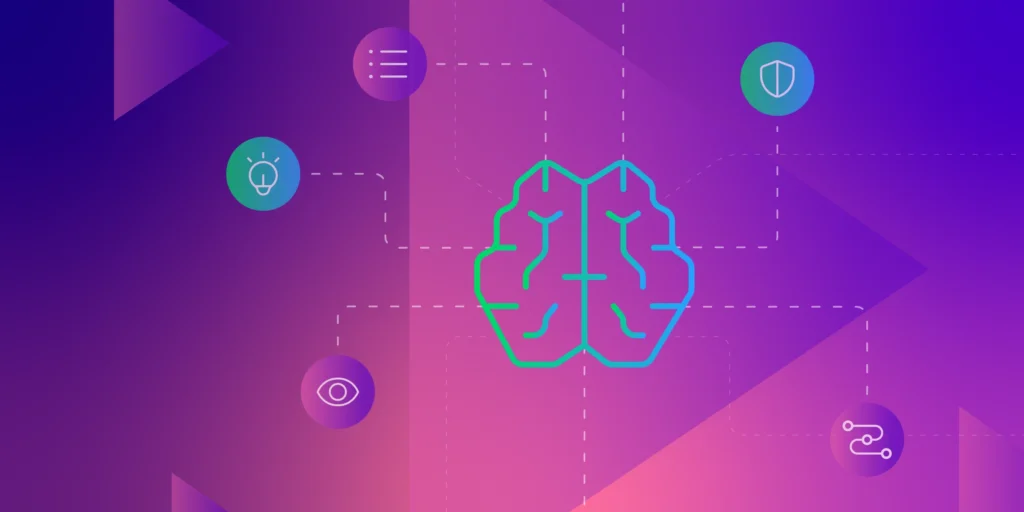I’ve been a skeptic about AI for 25 years. Neural networks, machine learning, deep learning — I’ve watched them all promise to revolutionize security and fall flat on their faces. But here’s the thing about being a skeptic that long: it teaches you exactly when to recognize the real thing. And I do think this time really is different.
Let me tell you why.
Part 1: The Long History of Disappointment
Back in 1995, I was an undergraduate researcher, knee-deep in neural networks when they were supposed to be the future. We had recurrent neural networks (RNNs), Long Short-Term Memory networks (LSTMs), and Convolutional Neural Networks (CNNs) that were going to change everything. The excitement was palpable — we were building the future!
Here’s what actually happened: everything was painfully, embarrassingly slow. The resources required were basically unavailable. But the real problem was that we simply didn’t have nearly enough clean, organized data to train models properly. Yes, CNNs did eventually find their niche in check verification and image recognition, but the revolution never came.
Fast forward to the 2000s, when I was at Verisign and later SecureWorks. We actually patented an ML-based anomaly detection engine — sweet, right? The specific problem we were trying to solve was fundamental to security: “Is this an attack or just noise?” You’d think ML would be perfect for this.
Reality check: Our sophisticated machine learning models couldn’t reliably distinguish between a port scan and a print job. The economics were clear — it was definitely cheaper to hire smart grads fresh from college than to rely on our “intelligent” models.
The 2010s brought another wave of hope. At Sumo Logic, we dove deep into the ML journey. The Stanford AI Index reports that 78% of organizations used AI in 2024, but back in 2017? Only 20% of companies had adopted AI in even one business area. We were early adopters, and we learned some hard lessons about what worked and what didn’t.
What worked: Basic pattern recognition for known issues. Log parsing. Log clustering and reduction was helpful, as was simple anomaly detection — but only with tons of human oversight. And suddenly there were thumbs up and down buttons on everything.
What didn’t work was anything that required actual understanding or context. The promise of autonomous security operations faded, along with the “self-healing” infrastructure dream.
The pattern was always the same — overpromise, underdeliver, and then quietly move on to the next buzzword.
Part 2: Finally – Something Worked
The truth is, it wasn’t security that changed my mind about AI. It was audio production.
I’ve been a hobbyist audio engineer for years, and anyone who’s done recording knows the pain of post-production: hours upon hours of removing background noise, eliminating hum, cleaning up recordings. It’s skilled work that requires a good ear and endless patience. Then I tried one of the new AI audio tools in late 2023.
What used to take me four hours took a little under fifteen minutes. And it didn’t just “kind of work” — it was better than what I could do manually. There were a few artifacts here and there, but I could easily patch them over with the source material. This was actually useful to me. The AI understood context, preserved the important frequencies, and handled complex noise patterns that would have taken me forever to address.
That was my “I see…” moment. If AI could do this, what else was I missing?
I went back to security applications with fresh eyes. Large Language Models weren’t just pattern matching — they were understanding context. Diffusion models weren’t just generating pretty pictures — they were solving complex optimization problems. The technology had fundamentally shifted while I was busy being skeptical.
The difference this time? 69% of enterprises now consider AI crucial for cybersecurity due to surging threats that exceed what human analysts can manage. That’s not vendor hype — that’s organizations voting with their budgets because the technology actually works.
Part 3: The Reality Check
Here’s where my 25 years of skepticism becomes valuable: I’m now able to say with confidence that we’re at the beginning of the hype cycle, not the end.
McKinsey research suggests that almost all companies are investing in AI, but only 1% believe they’re at maturity. Let that sink in. Everyone’s buying, but almost no one knows what they’re doing with it yet.
What’s genuinely different this time:
- The capabilities are real. AI can actually understand context, generate useful content, and solve complex problems.
- The infrastructure exists. We have the compute power, the data pipelines, and the deployment frameworks.
- The economics work. Unlike my SecureWorks days, AI solutions are now cheaper than human alternatives for many tasks.
What’s definitely the same:
- The tendency to oversell what’s possible today versus what might be possible tomorrow
- Organizations throwing AI at problems without understanding their data fundamentals
- The gap between vendor promises and actual implementation reality
I see organizations making the same mistake we made twenty years ago — assuming AI can work magic on garbage data. You know what AI does with bad data? It gives you bad answers, just faster and with more confidence.
Part 4: So What Now?
For security teams, the path forward is clear but requires discipline. And yes, this is where Edge Delta’s approach becomes relevant — not because we’re selling magic, but because we’re focused on the unglamorous foundation that makes AI actually work.
Start with Data Quality
I tell our customers the same thing I learned the hard way: AI is only as good as your data pipeline. If you’re feeding it unstructured logs, untagged events, and uncontextualized alerts, you’re going to get unactionable insights.
This means teams must implement:
- Standardization and tagging: Your data needs consistent structure. AI can’t learn patterns from chaos.
- Intelligent enrichment: Context matters. An IP address is just numbers until you know it’s from your CEO’s home network.
- Volume optimization: Here’s something few vendors will tell you — less can be more. 90% of organizations are actively implementing or planning to explore large language model use cases, but LLMs have token limits. Sending them your entire data lake isn’t just expensive; it’s counterproductive. Strategic data reduction means your AI focuses on what matters.
Focus on Augmentation, Not Replacement
The vendors promising fully autonomous SOCs are selling you the same dream I heard in 2005. The reality? 64% of businesses have confidence in AI’s ability to enhance productivity — enhance, not replace.
What augmentation looks like in practice:
- AI handles the pattern recognition and initial triage
- Humans provide context and make critical decisions
- AI learns from human decisions to improve over time
- Humans focus on strategy and complex problem-solving instead of staring at dashboards
This isn’t a limitation — it’s the optimal design. You want humans doing what they’re good at (making judgment calls, being accountable) and AI doing what it’s good at (processing massive amounts of data, finding patterns).
Build for Today’s AI, Plan for Tomorrow’s
Here’s my practical framework for being an AI realist:
- Test everything: Don’t trust vendor benchmarks. Test with your data, your use cases, your environment. I’ve seen too many “99% accurate” models drop to 60% in production.
- Measure actual outcomes: Track real metrics — mean time to detection, false positive rates, analyst productivity. Not “AI interactions” or “models deployed.”
- Keep humans in the loop: But change what that loop looks like. Instead of humans watching screens 24/7, have them reviewing AI decisions, providing feedback, handling escalations. It’s about collaboration, not observation. Train your humans how to maximize their impact by using these tools as force multipliers.
- Start small, scale smart: Pick one use case. Nail it. Measure the impact. Then expand. The organizations trying to “AI all the things” simultaneously are the ones who’ll be writing post-mortems in 2026.
The Skeptic’s Guide to AI Adoption
The global AI in cybersecurity market is expected to grow at a compound annual growth rate of 24.4% from 2025 to 2030. That growth isn’t happening purely because of hype — it’s happening because organizations are seeing real results. But those results come from doing the hard, unsexy work first.
Fix your data pipeline — yes, it’s still probably broken, even if you think it’s not. Start with augmentation, not automation. Build for what AI can actually do today while keeping an eye on tomorrow’s capabilities.
The difference between 2005 and 2025 isn’t just better algorithms or more compute power. It’s that we finally have AI that works — if you use it right. And using it right means being honest about both its capabilities and its limitations.
I spent 20 years being right about AI being overhyped. Now I’m telling you: don’t spend the next 20 being wrong about it being transformative. Because this time, it actually is different. Just not in the magical, solve-all-your-problems way some vendors are selling.
It’s different in a better way — it’s real, it’s practical, and it works. But only if you approach it like the powerful tool it is, not the magic wand it isn’t.
From one skeptic to another: the future is here. Let’s not screw it up by repeating the mistakes of the past. Start with the fundamentals, be realistic about the outcomes, and remember — even breakthrough technology needs a solid foundation to stand on.
That’s what we’re building at Edge Delta. Not because we’re AI evangelists, but because we’re AI realists who’ve learned from 25 years of watching this technology evolve. We’re not selling you tomorrow’s promises. We’re delivering today’s reality — and that reality is finally worth investing in.
From ingestion to insight — modern observability starts with Edge Delta. Experience it yourself in our free-to-use playground, or book a demo with a technical member of our team.






